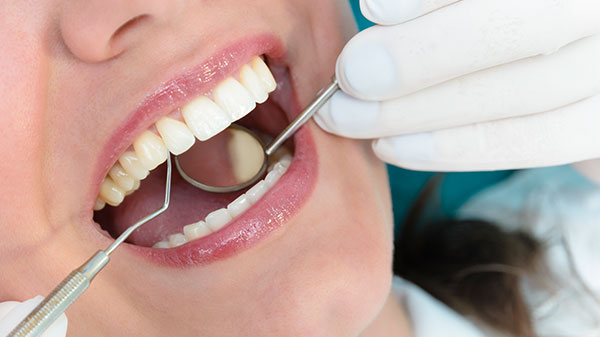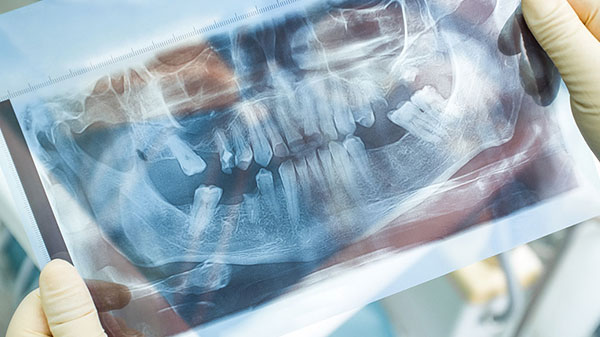Periodontal Procedures

Home care is an extremely important part of maintaining healthy teeth and gums, but even excellent home care cannot prevent bacteria and plaque. If the plaque is not removed, it can harden, becoming calculus. We will recommend a periodontal maintenance program that is best for you based on how quickly you develop calculus and your past and current periodontal health. During your maintenance visits we will perform and oral examination as well as a dental cleaning.
Cosmetic periodontal surgery includes, but is not limited to Crown Lengthening, Soft Tissue Grafts, and Bone Grafting. These procedures can enhance your smile by correcting problems like long or short teeth, uneven gum line, receding gums, exposed roots, and indentations in the gums or jawbone.
Scaling and Root Planing

Scaling and root planing is a non-surgical procedure used to treat periodontitis (gum disease). According to the Journal of Evidenced-Based Dental Practice, this deep cleaning procedure is considered the "gold standard" for patients with chronic periodontitis. When plaque and tartar accumulate around and under the gums, it can lead to deep pockets, loss of tissue and bone, and eventually teeth. When the dentist determines you have advanced signs of gum disease, we may recommend scaling and root planing as the first procedure to treat this condition. Scaling and root planing teeth may take more than one appointment. Typically, a local anesthetic is used for your comfort. The procedure involves scaling bacterial toxins, plaque and tartar from teeth and root surfaces; followed by smoothing any rough areas on root surfaces. This will help to keep bacteria from gathering there and will allow your gums to heal and reattach firmly.
Crown Lengthening

Do you have a “gummy” smile causing your teeth to appear short? It is possible that your teeth are the proper length, but they are covered with too much gum tissue. It is likely that this can be corrected with dental crown lengthening. During this procedure, excess bone and gum tissue are reshaped, exposing more natural tooth. This procedure can be used on one tooth, evening out your gum line, or on several teeth giving you a beautiful, natural smile. Crown lengthening can also be used prior to a restorative or cosmetic procedure if the tooth is decayed or does not have enough structure for a restoration. Crown lengthening can adjust the gum and bone level to expose enough tooth, allowing it to be restored.
Bone Grafting

Replacement teeth supported by implants work exceptionally well because of the way they are anchored into the jawbone for support. This only works if you have enough tooth-supporting bone in your jaw to hold a dental implant. When you lose a tooth, the surrounding bone deteriorates and the longer that tooth is gone, the more bone you lose. If you want to replace the tooth with an implant, but don’t have the bone to support it, bone grafting may be your answer. The bone grafting procedure involves making a small incision in your gum to expose the bone beneath it and grafting material (which can come from your own body or elsewhere) is added. The grafting material will eventually be absorbed and replaced by your own new bone which will be strong enough to support an implant. Any soreness after surgery can typically be managed by over-the-counter pain relievers and you should feel back to normal quickly. It does take up to about seven months for your new bone growth to mature enough to receive your dental implant.
Pocket Depth Reduction
Your bone and gum tissue are meant to fit snugly around your teeth. When periodontal disease exists, the bone and tissue deteriorate and “pockets” form around your teeth. Left untreated, these pockets grow, giving more space for bacteria to live and multiply. The bacteria exacerbates the problem leading to more bone and tissue loss. Eventually, this will lead to tooth loss or extraction. If the dentist determines that you have pockets that are too deep for you to effectively clean with traditional methods, a pocket reduction procedure will be recommended. During this procedure, the dentist will fold back the gum tissue in order to remove bacteria, and then re-secure the tissue into place. If necessary, irregular surfaces of damaged bone will be smoothed to eliminate areas where bacteria can grow. Good oral hygiene and regular professional cleanings along with reduced pockets will increase your chances of keeping your natural teeth.
Extractions
While our goal is always to save your natural teeth, sometimes extractions are unavoidable. There are many reasons an extraction may be necessary including extra teeth, baby teeth that don’t fall out on their own, preparation for orthodontic treatment, severe infection, and wisdom teeth if they are decayed, cause pain or are impacted.
Before an extraction, we will take an X-ray to help plan the best way to remove the tooth. In order to keep you comfortable during the extraction, we will discuss the type of anesthesia suited to your specific needs. Be sure to have someone with you on the day of the procedure to drive you home.
There are two types of extractions: A simple extraction is used when you can see the tooth in your mouth. In a simple extraction, your tooth is loosened with an instrument called an elevator, then removed with forceps. A surgical extraction, on the other hand, is more complex. This is necessary if the tooth is broken off at the gumline or impacted. In these cases, the doctor will need to make a small incision in your gum in order to remove the tooth.
After your extraction, we will provide detailed instructions about what to expect, any follow-up instructions and any necessary medications for discomfort.
Learn More About Periodontal Disease
Periodontal health can be prevented with proper dental care, and treated at each stage.
Learn More About the Stages of Periodontal Disease